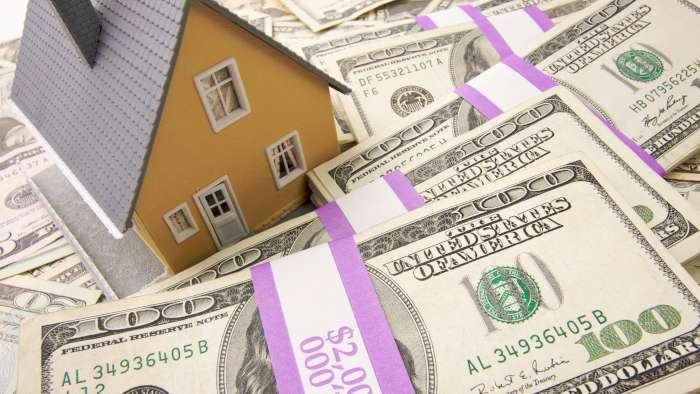An industry veteran explains a simple insider trick to estimate current reverse mortgage interest rates without calling a lender.
The reverse mortgage industry is a small niche within the broader mortgage industry, so it’s not always easy to find current reverse mortgage rates online. However, there is a way to estimate current reverse mortgage rates without calling lenders. We’ll explain a simple insider trick to do that in this article.
Keep in mind that actual lender interest rates can vary depending on loan scenario and market conditions. If you want an actual quote with rates and closing costs that reflect your unique qualifications and goals, you’ll need to contact a reverse mortgage lender.
Before we dig into how to estimate current reverse mortgage rates, let’s first cover a few basics about how a reverse mortgage works.
Table of Contents
First, a Few Basics
The most popular reverse mortgage in the United States is the home equity conversion mortgage, or HECM (often pronounced heck-um by industry insiders).
The HECM was created and signed into law by President Reagan as part of the Housing and Community Development Act of 1987. The Federal Housing Administration (FHA) insures and regulates the HECM under the authority of the Department of Housing and Urban Development (HUD).
If you’re at least 62, a HECM reverse mortgage enables you to convert a portion of your home’s value into cash.
No mortgage payments are required as long as at least one borrower or non-borrowing spouse lives in the home, maintains it, and pays the property taxes, homeowner’s insurance, and HOA dues (if applicable).
You remain the owner of your home and you’re free to leave it to your heirs. Your heirs will inherit any equity remaining in the home, whether they choose to sell it or keep it.
The HECM is a non-recourse loan, which means FHA will cover any shortage if your home isn’t worth enough to pay off the entire balance.
Proceeds can be taken as a line of credit, lump sum, monthly income, or some combination of these options.
The HECM is a home loan, so it has an annual interest rate just like any other home loan. HECM interest rates are usually comparable to traditional “forward” mortgage rates.
How Do Interest Rates Affect Reverse Mortgages?
Reverse mortgages are affected by interest rates in a few different ways. The first way is obvious: when rates increase, reverse mortgage interest rates also increase. This is how it works in the “forward” mortgage world as well.
The difference, of course, is that you don’t have to make a monthly principal and interest payment on a reverse mortgage as you do with a “forward” mortgage. The unpaid interest simply accrues onto the loan balance over time. Your home is essentially paying the mortgage “payment” so you don’t have to out of your pocket.
Interest rates also impact the principal limit, which is total proceeds offered by a reverse mortgage. The principal limit is calculated based on your home’s value, current interest rates, and the age of the youngest borrower or non-borrowing spouse.
Principal limits tend to be higher for older borrowers and lower for younger borrowers.
Principal limits also tend to increase as interest rates decrease and decrease as interest rates increase. In other words, the principal limit has an inverse relationship with interest rates.
How The Principal Limit Is Calculated
To calculate the principal limit, we need to first establish the maximum claim amount. The maximum claim amount is equal to the appraised value of your home or the lending limit, whichever is less.
Most HECM borrowers have homes worth less than the lending limit, so the maximum claim amount usually equals the appraised value.
The principal limit is calculated by multiplying the maximum claim amount by a principal limit factor selected from tables published by FHA. The lender selects the appropriate principal limit factor based on the age of the youngest borrower (or non-borrowing spouse) and the current expected interest rate.
The expected interest is determined by adding together the 10-Year Treasury Swap Index and a margin set by the lender. For example, if the index is 2.50% and the lender’s margin 2.50%, then the expected interest rate would be 5.0%.
To see how the expected interest rate impacts proceeds, let’s check out an example. Let’s assume we’re working with a home value of $300,000 and the appropriate principal limit factor is 0.50, based on age and a 5.00% expected interest rate. The calculation works as follows:
$300,000 (maximum claim amount) * 0.50 (principal limit factor) = $150,000 (principal limit)
In this example, the principal limit is $150,000. This is the gross amount of money available to pay off existing mortgages, cover closing costs, pay off debt, allocate to line of credit, etc.
If you’d like to estimate how much you can get, check out our reverse mortgage calculator.

HECM Reverse Mortgage Fixed Rates & Variable Rates
The reverse mortgage interest rate is called the initial interest rate. How the initial interest rate is calculated varies depending on which of the two main HECM products you’re considering.
How the Initial Interest Rate Is Calculated For the Variable-Rate HECM
The variable-rate HECM is far and away the most popular because it’s more flexible and typically offers more money. Proceeds can be received in the form of a line of credit, lump sum, monthly income, or some combination of these options.
The initial interest rate for the adjustable-rate HECM consists of an index (typically the 1-month Treasury) plus a margin set by the lender that usually ranges from 2.50% to 3.00%, depending on the loan scenario and the lender you’re working with.
Assuming a 3.00% margin, the initial interest rate would be calculated as follows:
3.73% (1-month Treasury as of this writing) + 3.00% (margin) = 6.73% (Initial interest rate)
If the margin is instead 2.50%, the initial interest rate would be calculated as follows:
3.73% (1-month Treasury as of this writing) + 2.50% (margin) = 6.23% (Initial interest rate)
Note that an additional percentage is charged by FHA on top of the initial interest rate for annual mortgage insurance premium (MIP).
Lenders have discretion to adjust the margin, so it may be worth negotiating as you shop current reverse mortgage rates.
However, keep in mind that if the lender cuts the margin, they will have less leeway to cover some or all of your closing costs. If you want a reverse mortgage no closing costs, it’s unlikely that the lender will offer a reduced margin as well.
As you can see, it’s pretty easy to estimate current rates for the variable-rate HECM. All you have to do is add today’s 1-month Treasury rate to a margin of 2.50% to 3.00% to get a good estimate.
If you’d like a more exact rate estimate, we recommend contacting a licensed reverse mortgage lender for an actual quote.
How the Initial Interest Rate Is Calculated For the Fixed-Rate HECM
It’s a little harder to estimate initial interest rates for fixed-rate HECMs because they’re not based on a widely available index. Pricing for fixed-rate HECMs is based on investor demand, which changes frequently and isn’t disclosed by lenders.
Very few homeowners take the fixed-rate HECM because it tends to offer significantly less money and the proceeds are only available as a lump sum.
However, if you’d like to estimate current fixed-rate HECM interest rates, you can do it by simply adding 0.50% to 1.00% to the estimated initial interest rate for a variable-rate HECM (see previous section).
Again, if you’d like to get an actual quote with rate and closing costs, we recommend contacting a licensed reverse mortgage lender.
Are Reverse Mortgage Interest Rates High?
It’s a common misconception that HECM reverse mortgage interest rates are really high. In reality, they’re usually comparable to interest rates for 30-year fixed cash out “forward” mortgages.
Frequently Asked Questions
When is the rate locked on a reverse mortgage?
It depends on the reverse mortgage product and the interest rate you’re talking about. If you’re talking about the expected interest rate, which is used to calculate proceeds only, the rate is locked for 120 days when you sign your application. The initial interest rate for a fixed-rate HECM is locked when your final documents are signed. The initial interest rate for a variable-rate HECM is never locked.
Are reverse mortgage interest rates higher?
Not necessarily. HECM reverse mortgage rates tend to be comparable to interest rates for traditional “forward” mortgages.
What is a reverse mortgage and why is it bad?
A reverse mortgage isn’t “bad”. It’s actually a great product as long as it’s used for the right purpose. It enables seniors 62 and older to convert home equity into cash without a mortgage payment and without giving up ownership of the home.
How much are closing costs on a reverse mortgage?
Closing costs vary widely depending on your home’s value and location. We don’t offer a reverse mortgage closing cost calculator for that reason. If you want a closing cost quote, we recommend contacting a licensed reverse mortgage lender.
What is the interest rate on a reverse mortgage?
Reverse mortgage interest rates vary depending on market conditions and the loan scenario, but they’re usually comparable to traditional 30-year “forward” mortgage rates.

